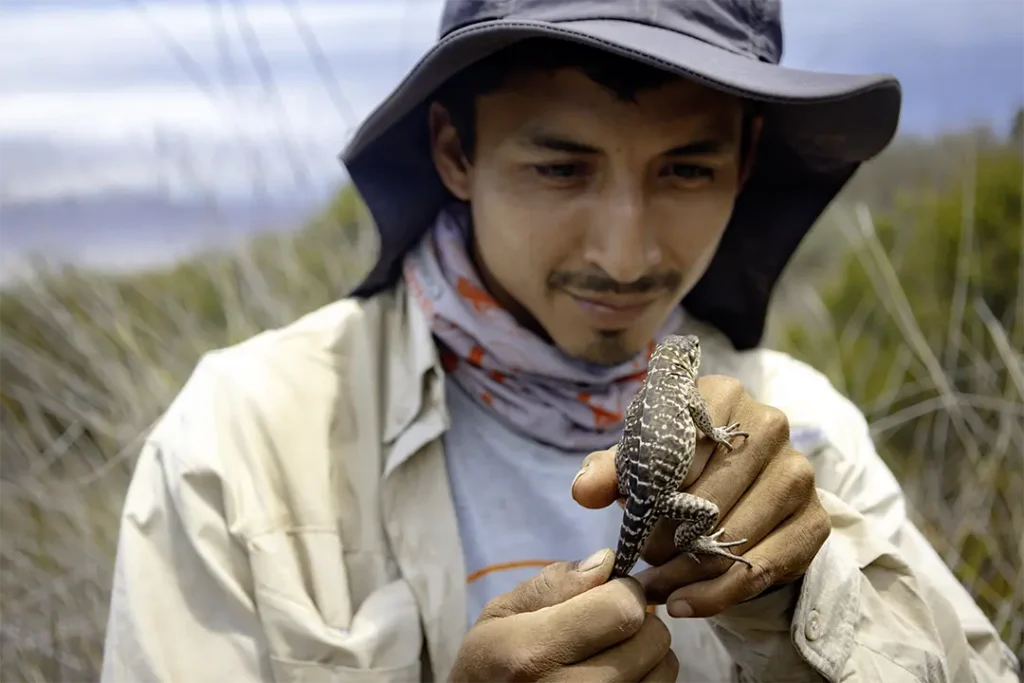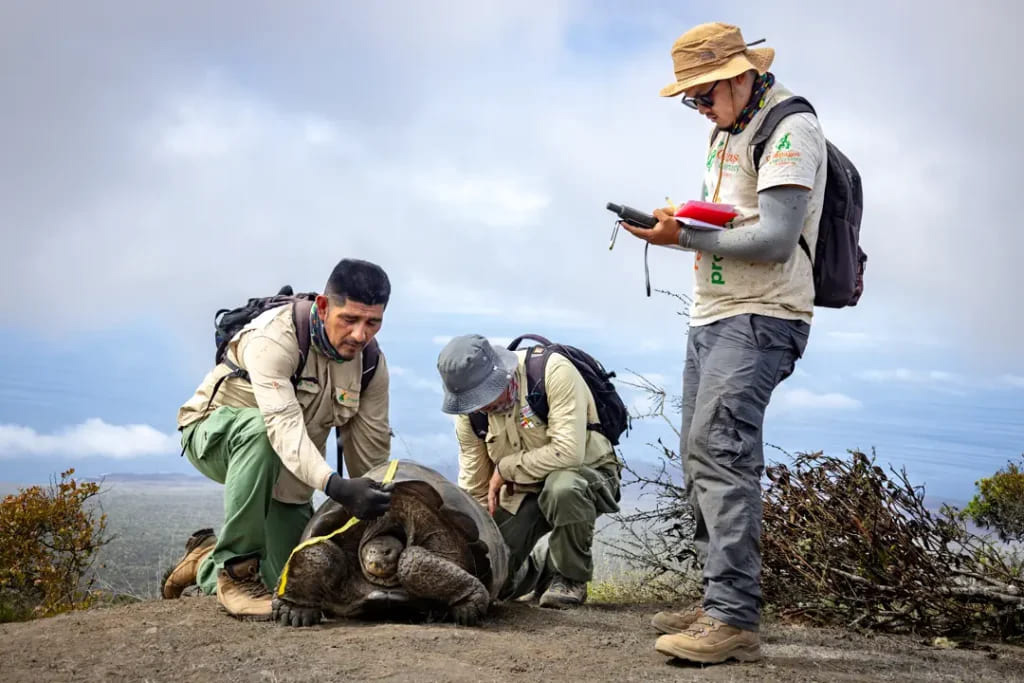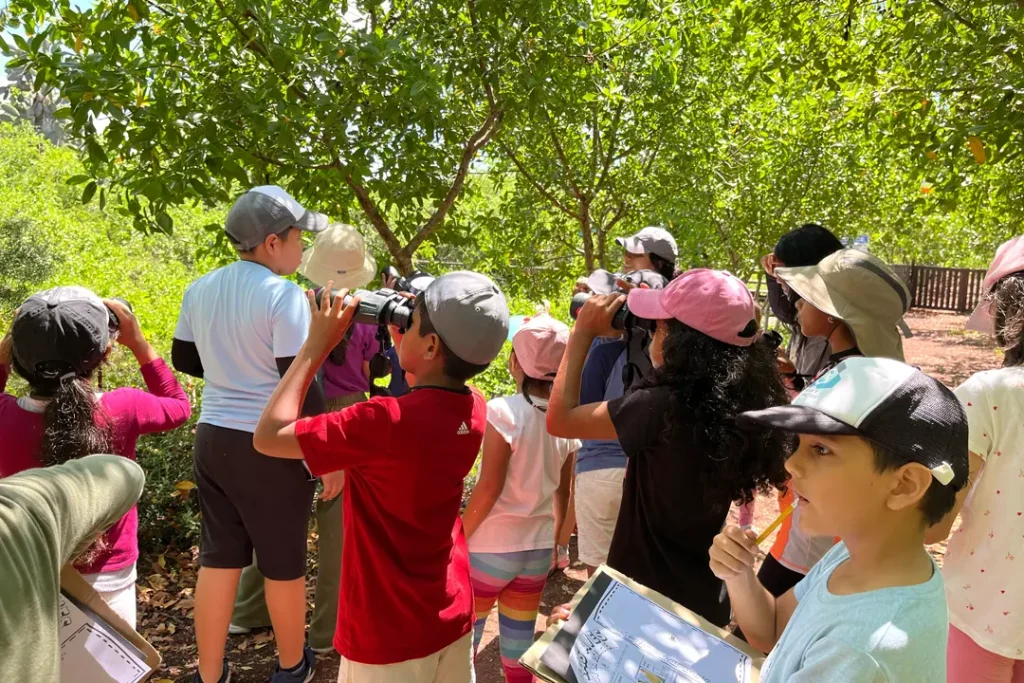The goal of doing science in Galapagos seems far-fetched for someone who is born in a remote area, without access to mentors or universities and with no professional opportunities, says Cristian Gil. He left the island to study in Argentina, but was forced to return after the pandemic ended his trip.
Migration is a difficult decision for many families and can be financially unviable. Many young people will have to give up their dreams if they don’t receive support. Science loses a unique perspective, that of the people who have known and loved this place since childhood.
When Local Talent Discovers Opportunity
The five young scientists share more than just a connection with the natural environment of Galapagos. The story they share is also a paradigm-breaking one. The first team of scientists made up exclusively of Galapaguenos in Galapagos Conservation.
From the very beginning, their training was hands-on. They have taken part in scientific expeditions and learned how to analyze data collected. They also received mentorship directly from Dr. James Gibbs, Dr. Jorge Carrion. Galapagos Conservancy offers a supportive working environment as well as financial incentives to allow students to pursue their academic goals without having them leave the islands.
Janai Yepez is studying Environmental Technology while working on the field. He says that it’s a challenge, but an advantage. “Each class is meaningful because I relate it to my observations. “I feel that I am learning to take care of what I love.”
The team is now focused on species that require urgent action such as the giant tortoises, yellow and pink land Iguanas, and other species. Now, their consistent and rigorous work is being recognized outside the archipelago.
Roberto Jimenez’s journey is an example of the growth of scientific talent in Galapagos. He started as a research assistant at the Charles Darwin Research Station, and then spent 20 years as a park ranger protecting the biodiversity of the islands. He is now a researcher. He says, “I’ve spent years on the field protecting biodiversity.” “But I am also involved in research now.” This gives me great pleasure. “I am motivated to work every day by the knowledge that my role as a Galapagueno researcher helps protect the area where I was raised.”
The debut of a new generation of Galapagueno scientists
The five Galapagueno researchers presented their research at the First Ecuadorian Congress of Herpetology held in Loja, Ecuador, from March 27-29, 2025. Experts from all over the country attended. Galapagos Conservancy co-organized a symposium that focused on the reptiles found in the archipelago. The team presented findings about the ecology of pink iguanas and the diet of land iguanas and tortoises. They also discussed the plan to reintroduce giant tortoises in Floreana and the restoration of Santa Fe.
It wasn’t a simple presentation. Their debut as leaders in the scientific community of Ecuador was a big deal. Adrian Cueva says, “I was incredibly motivated.” It was my first presentation at such an event, and I was proud to represent both my team and my islands.
Adrian, a recent graduate in Environmental Protection Technology, found that the experience validated his work and the possibility of building a high-quality science grounded in Galapagos knowledge, as well as demonstrating he was deeply committed to the area.
Galapagos’ science will continue to be dependent on experts from outside, who are often not familiar with the reality of the islands. Without the strengthening of local talent, science in Galapagos will continue to rely on external experts who are often disconnected from the reality of the islands.
A new generation of scientists is emerging thanks to the support provided by Galapagos Conservancy. They produce high-quality research with deep roots in their native land. They show that knowledge does not always come from outside. You can build it from the inside out, through love, commitment and a strong feeling of belonging.
We are investing in the future development of Galapagos by supporting these young scientists.

©Galápagos Conservancy



